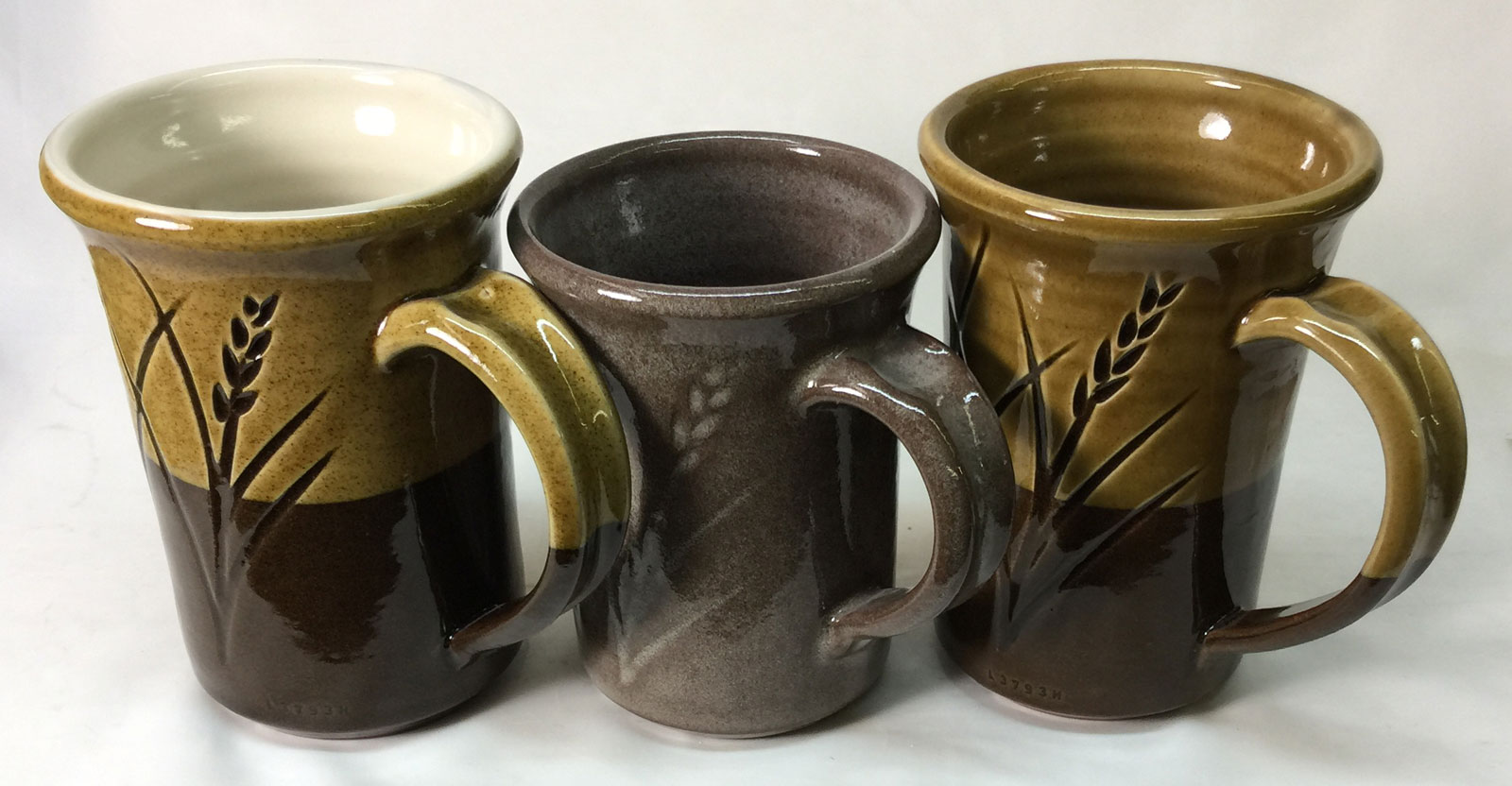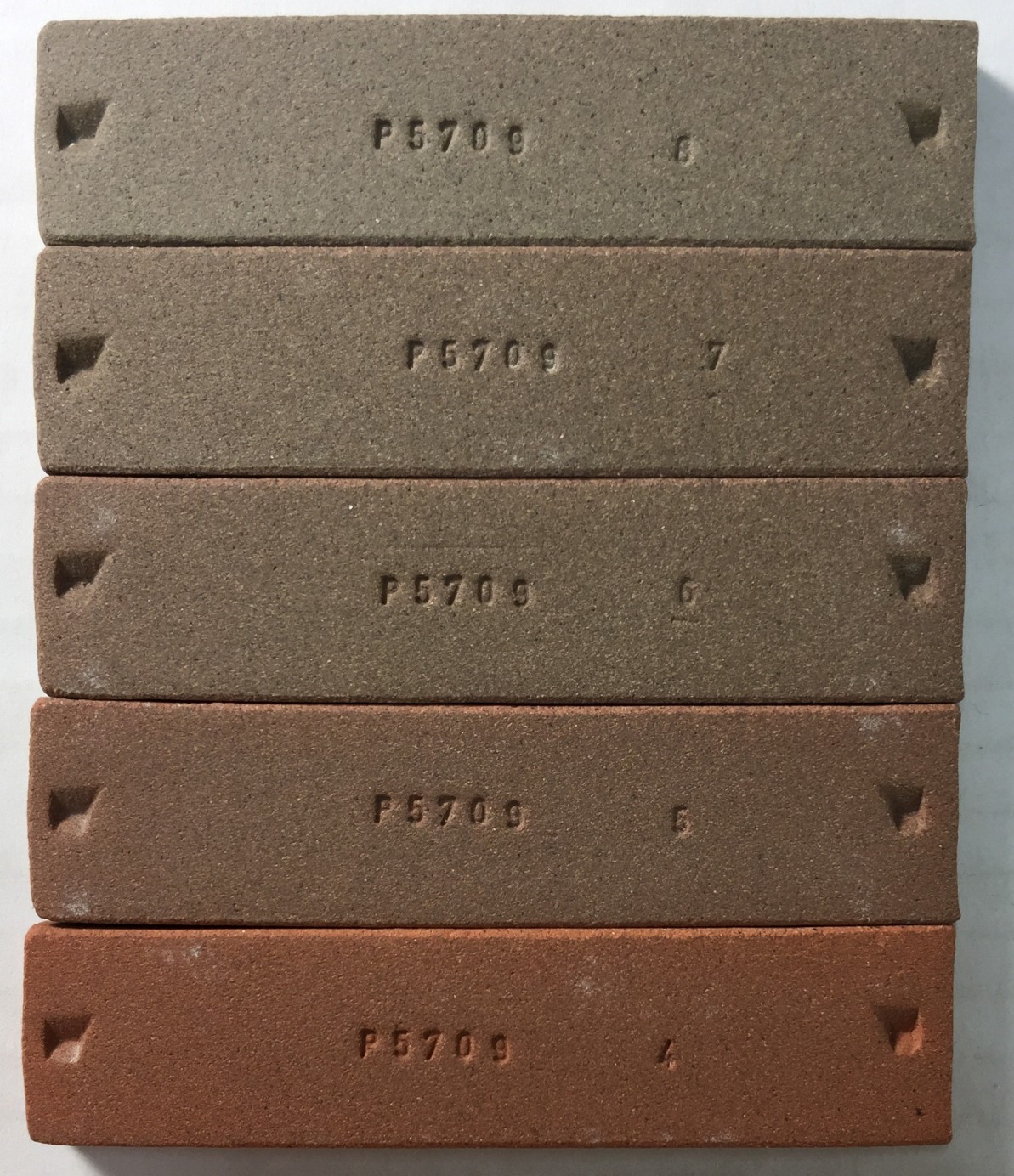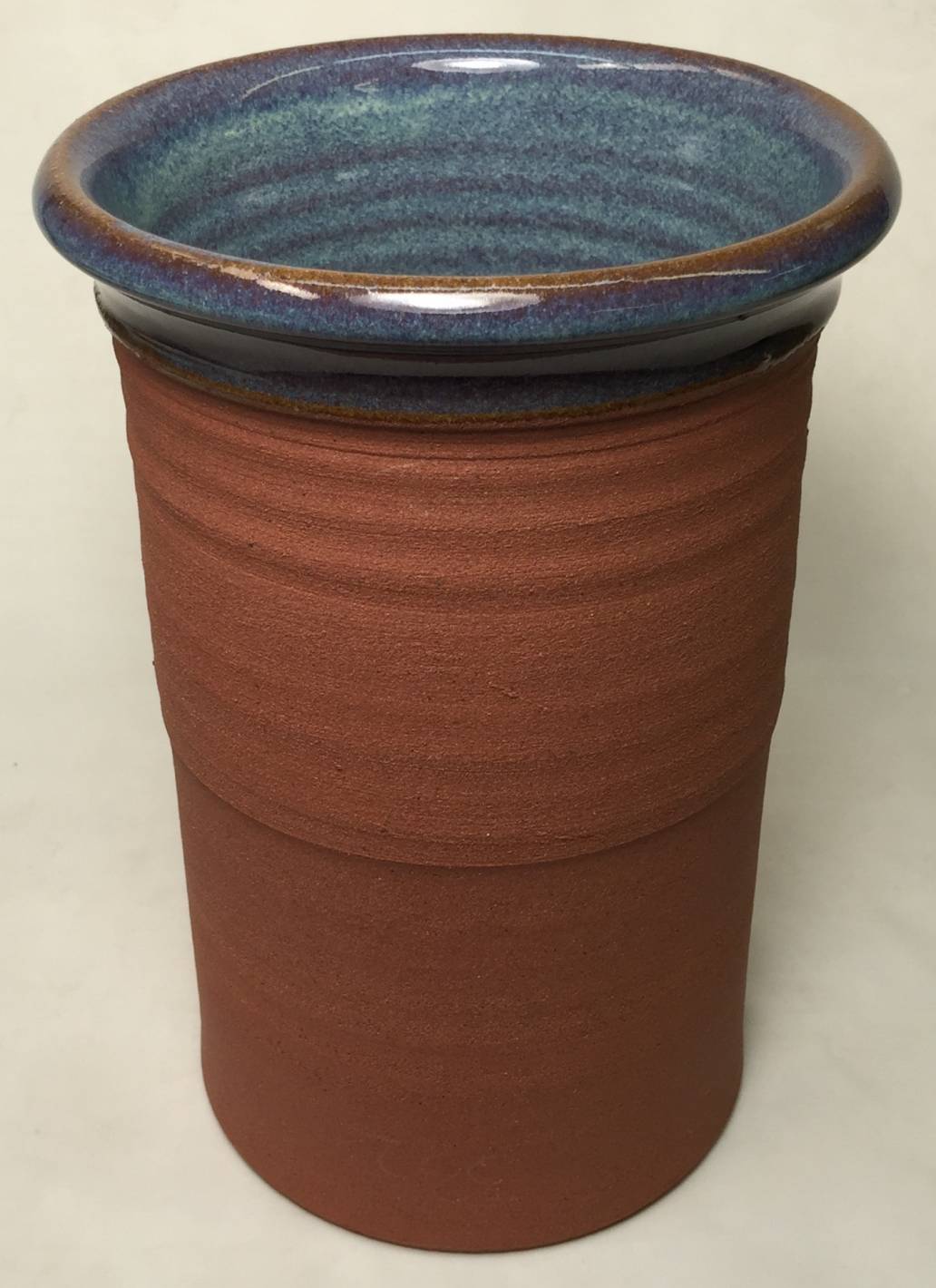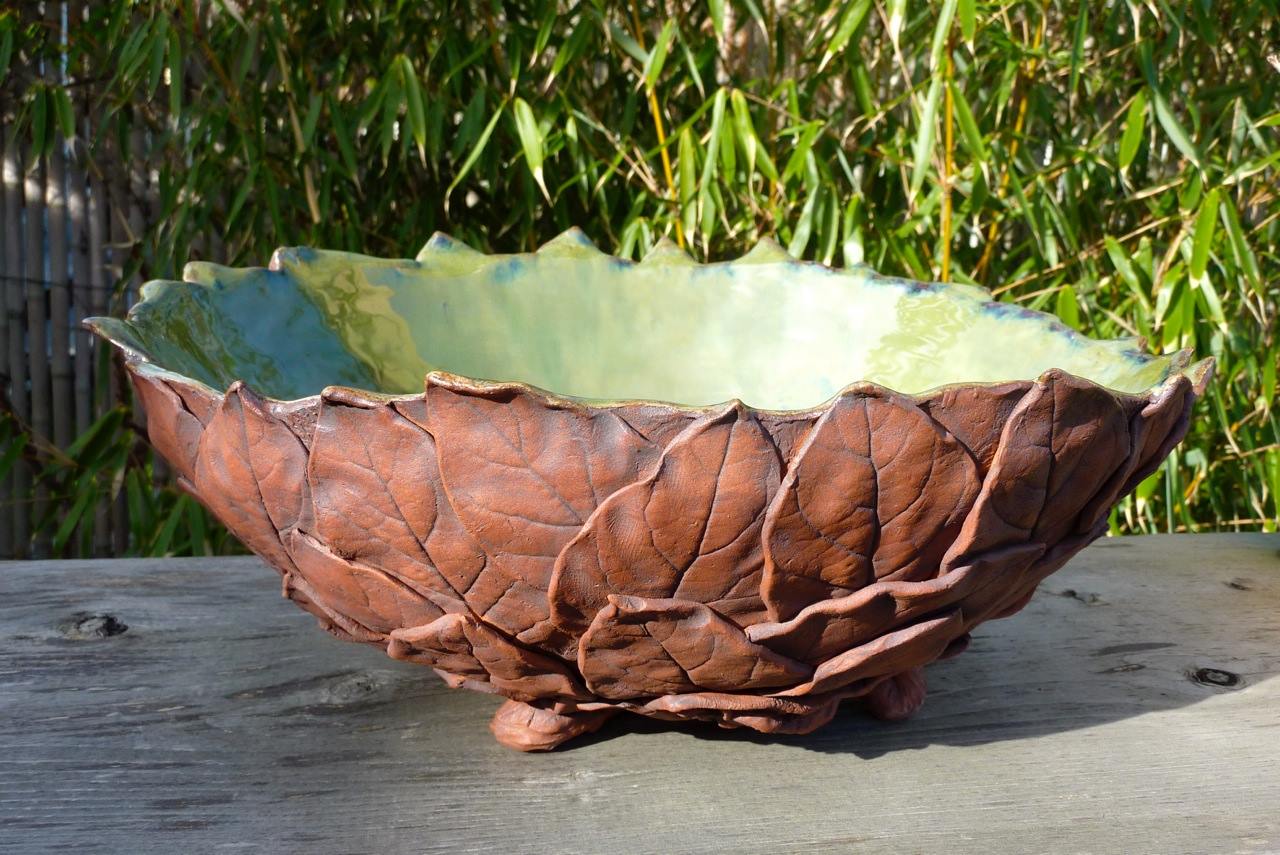M332
Description
Mid-temperature, sandy, plastic, semi-vitreous, warm medium brown, native throwing body. M332 is made from seven different native clay materials and it is generally used for two reasons: its appealing warm red fired color at cone 5-6 and its combination of a sandy texture and high plasticity. M332 is attractive when used with glazes that absorb and highlight body iron and with ware that leaves some bare patches of clay showing. M332 has exceptionally high dry strength.
Process Properties
M332 has a highly plastic base with a sand complement to add texture. While it throws very well and generates sufficient slip, it can be 'grabby' during throwing with care to make sure pressure surfaces are not well lubricated. Once you learn how to throw it you will be amazed at what it can do.
Cautions: Because of the sand content it can develop splits during construction or throwing if water is allowed to sit on the surface at stress points (i.e. the outer belly of a thrown vase). In addition, when pulling handles, you must develop techniques to minimize splitting. It is best to keep sponging of leather hard or dry ware to a minimum as this tends to remove fine particles at the surface and expose the coarser ones (a problem on the lips of functional ware. M332 needs to be dried with care to avoid cracking. Turn open shapes over as soon as they will support themselves and cover ware with cloth and plastic (not just plastic) to even out any gradients in water content.
Firing
M332 burns to a warm brick-red at cone 3-5, shifting to a medium variegated red brown at cone 6, and finally to a grey brown by cone 8. If you want the attractive red color remember that M332 undergoes a sudden color shift from red to brown between cone 6 and 7. Fire carefully to avoid overshooting the target temperature and losing the red. The redish color depends on the body firing to 4-5% porosity.
To get the best defect-free surface please consider using a drop-and-hold firing schedule, for example the PLC6DS schedule. If crystallization during cooling is not an issue, glazes will give optimum results if slow-cooled also (e.g. the C6DHSC schedule).
Glazing
Since we add materials with coarser particles and impurities to give the surface a more earthy appearance you can expect that the body will not provide perfectly clean glazed surfaces for functional ware. Glaze disruptions such as small pinholes and specks will be common. You can often solve this by using a drop-and-soak firing schedule. In other cases it may be necessary to fire the bisque a little higher to expel more gases of decomposition.
Although M332 burns a warm red color at cone 5, if you apply a transparent glaze it will flux the surface and the color will likely darken and turn dark brown brown. Thus, if you need to achieve red glazed colors it may be necessary to fire at cone 3-4. Also, because this is an iron-brown burning body it will impose some of its color on all glazes, darkening them and muddying colors.
Caution About Clear Glazes

Clear glazes often do not work on our dark burning bodies (like M390, Coffee Clay). The center mug is clear-glazed with G2926B (and is full of bubble clouds).
Left mug: The outside glaze adds 4% iron to G2926B (the iron particles are acting as a bubble fining agent). Right mug: The whole thing is glazed with GA6-B Alberta Slip base glaze.
Glaze Recipes
Commercial brush-on glazes: They may or may not fit our clays (check for glaze fit using a BWIW test or similar). For brightly colored glazes (especially with layering) do a leach test (e.g. GLLE test). Consider using a transparent or white liner glaze for food surfaces.
DIY brushing glazes and dipping glazes: Begin with good transparent base recipes that do not craze, cutlery mark or leach on the body. Our G2926B glossy and G2934 matte can be purchased as powders or weighed out from their recipes (both can be adjusted for glaze fit). The two can be mixed to fine-tune matteness (e.g. 15:85 matte:gloss mix gives us a silky matte). Stains, opacifiers and variegators can be added to make almost any effect. Consider also making glazes based on GA6-A and GR6-A.
Crazing: Functional ware must remain craze-free (crazing is unsanitary and drastically reduces ware strength). Even though ware may not be crazed out-of-the kiln it may do so with time. Do cycles of a boiling water:ice water immersions (BWIW test) on a piece to test glaze fit (by stressing it to bring out any crazing or shivering tendencies).
Thixotropy: If you want the best application properties for one-coat dipping, consider creating a thixotropic slurry. Thixotropic glazes are creamy because they have been thinned and then gelled by the addition of a flocculant.
This body is a great candidate for the engobe process, we recommend the L3954B recipe. It can be colored with stains or whitened with zircopax. It can be applied thickly as an engobe or thinly as a slip.
If you want to develop and mix your own glazes and engobes consider getting an account at insight-live.com. You can organize a methodical development program and adopt better methods of testing (e.g. melt fluidity, thermal stress, slip-fit tests).
Thermal Expansion
We do not supply thermal expansion values. If a chart is supplied here, please view it only as a way to compare one body with another. Please note that, although you may calculate the thermal expansion of a glaze, this cannot be done for clay bodies since they do not melt. The best way to fit glazes to clay bodies is by testing, evaluation, adjustment and retesting. For example, if a glaze crazes, adjust its recipe to bring the expansion down, fire a glazed piece and thermal stress it (using an IWCT test, 300F into ice-water). If it still crazes, repeat the process.
Physical Properties
Drying Shrinkage: 6.0-7.0% Dry Strength: n/a Water Content: 19.5-20.5% Drying Factor: c332 Dry Density: n/a
Sieve Analysis (Tyler mesh):
+48: 0.1-0.5% 48-65: 2.0-4.0 65-100: 6.5-9.5 100-150: 6.0-8.0 150-200: 8.0-11.0 200-325: 8.0-12.0
Fired Shrinkage:
Cone 4: 3.0-4.0% Cone 5: 3.5-4.5 Cone 6: 4.0-5.0 Cone 7: 4.5-5.5 Cone 8: 5.0-6.0
Fired Absorption:
Cone 4: 5.5-7.5% Cone 5: 4.5-6.0 Cone 6: 3.5-4.5 Cone 7: 2.5-3.5 Cone 8: 1.5-2.5
Gallery

M332 with Ravenscrag and Alberta Slip floating blue glazes. Fired to cone 6 oxidation using the C6DHSC schedule.



